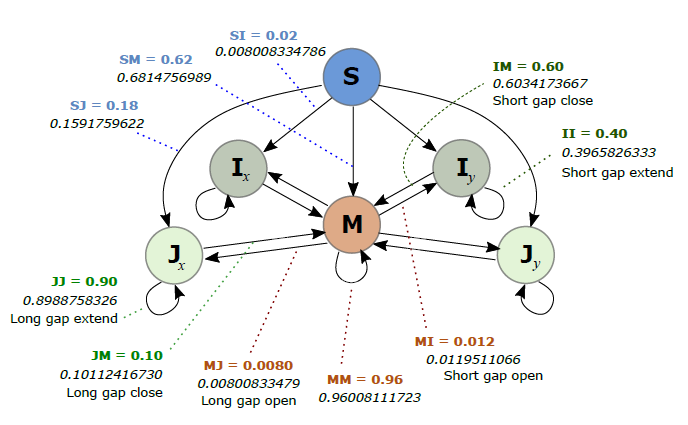Hidden Markov model (HMM)
The PPP algorithm is based on a hidden Markov model (HMM) similar to the one used in Probcons .
The HMM is specified by the shape of its graph and parameters which are specified as probabilities in the range 0 to 1. There are two types: transition probabilities and emission probabilities. Transitions are movements between HMM states; transition probabilities are similar to gap penalties in conventional alignment algorithms. Emissions are letters generated by match and insert states. The match state emits an aligned pair of letters. An insert state generates a single letter from one sequence, representing an insertion or deletion.

HMM showing transition probabilities.
Default probabilities for Muscle v5 are shown in bold, coloured text; defaults for Probcons are italic. Probcons values are specified to 10 significant figures per its source code, while Muscle values are rounded to two significant Figures on the premise that small differences should be immaterial to alignment quality. Emission probabilities are taken from the joint-probability form of the BLOSUM62 matrix (not shown).

